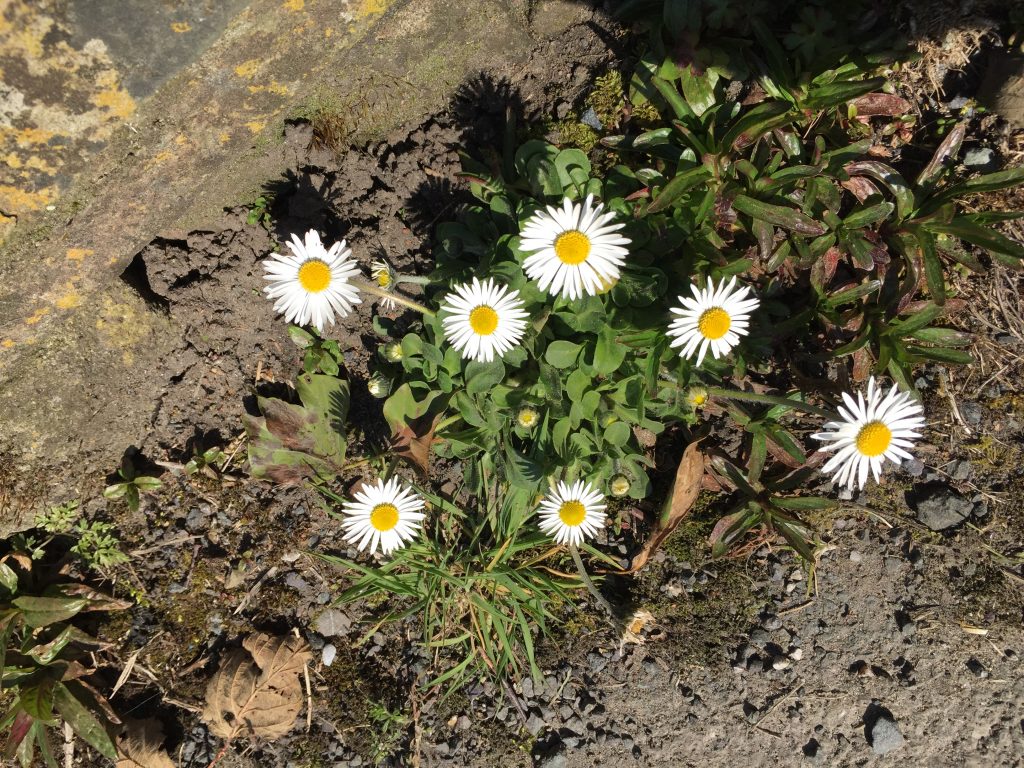
U.S Route 66 was one of the original highways across America. The highway, which became one of the most famous roads in the United States, originally ran from Chicago to Santa Monica. I’ve travelled many of its desert stretches in New Mexico, Arizona and California. It was recognized in popular culture by both the hit song “Get your kicks on Route 66” and in John Steinbeck’s classic American novel, The Grapes of Wrath (1939), the road “Highway 66” symbolized escape and loss. Several of these facts were to come in to play on my hike today but I didn’t know that when I set off.
A coupe of months ago went I was walking along the towpath I’d reached yet another closed section and I chatted to a couple of guys along the trail. “Oh, you can bypass the closed section by taking a track leading from the back of Mytholmroyd train station.” I wrote this down on my ‘places to walk’ list when I got home that day. So this was the day I decided to see if their info was correct.
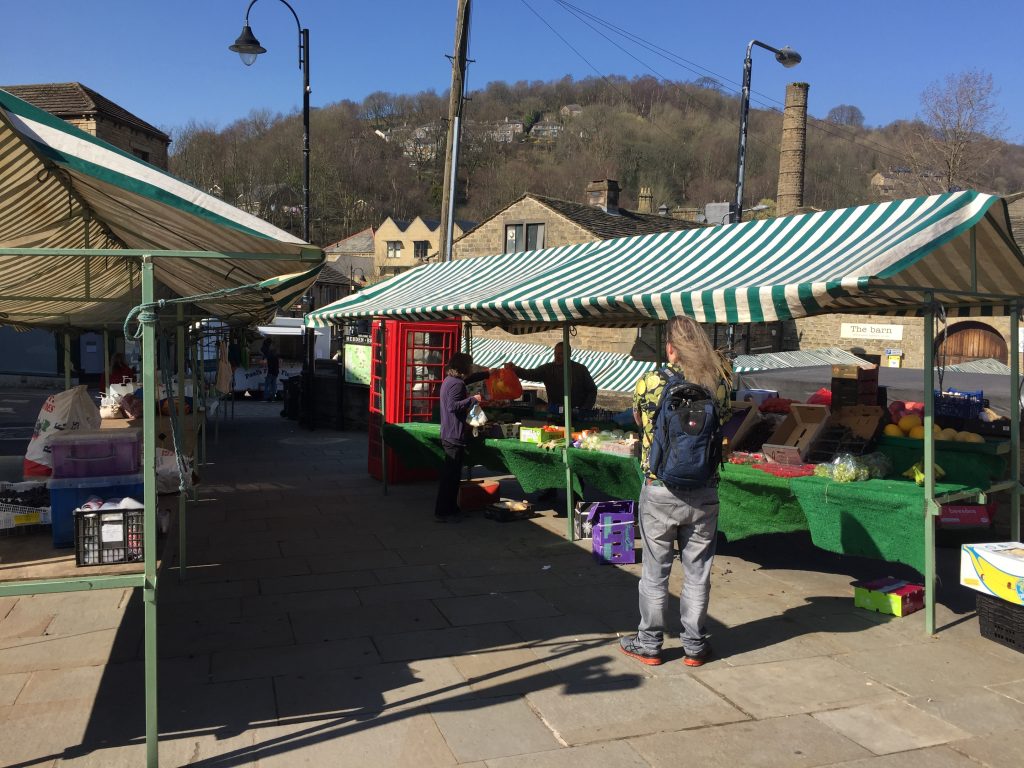
Market day was not as busy as usual . . . 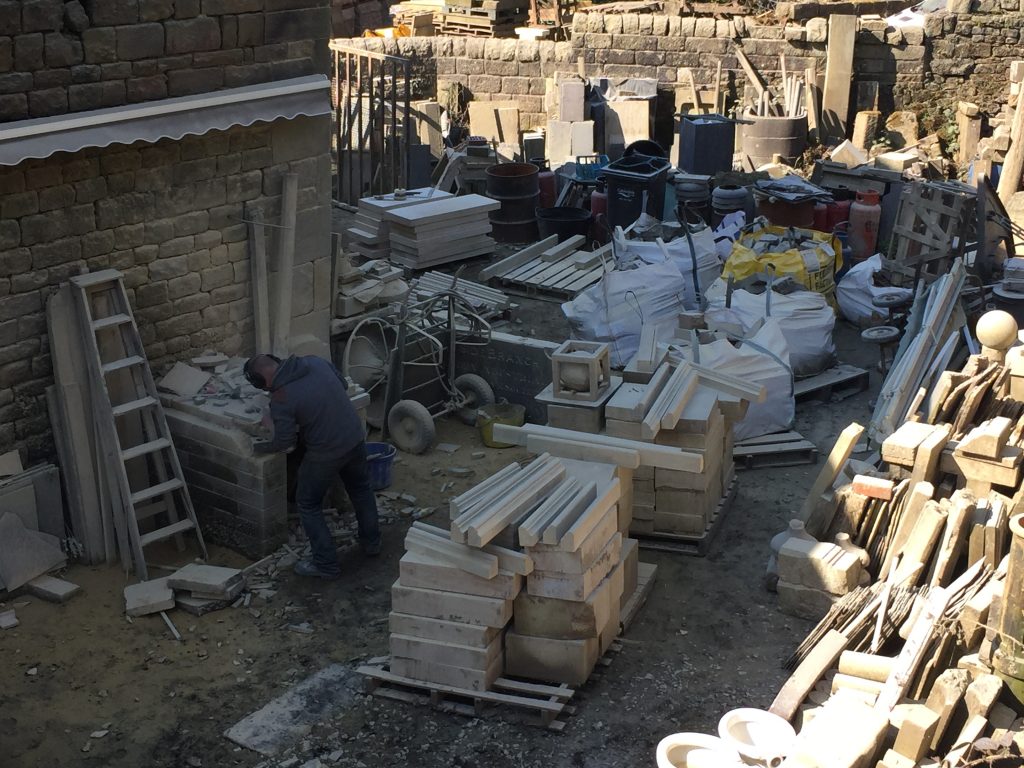
. . . but the stone mason was 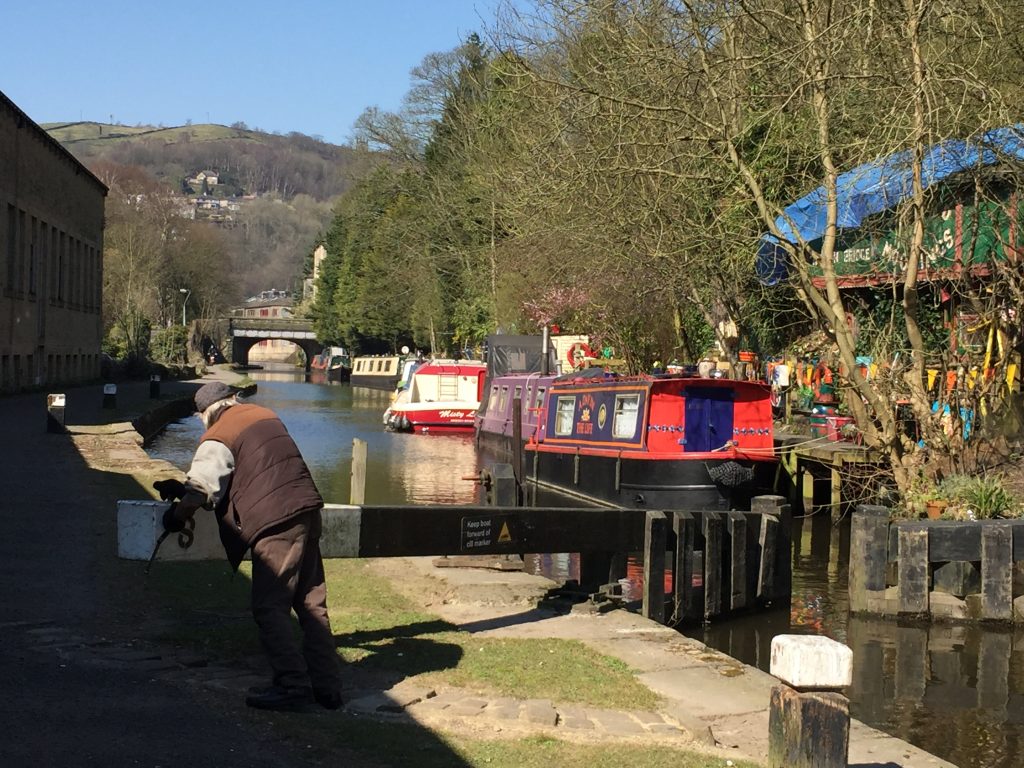
Mayroyd Lock
In Mytholmroyd I found my ‘new’ track easily. Over the past couple of months I’d been trying to see it from the train but I only caught glimpses of it through the trees.

It turned out to be a cycle track that runs (should that be ‘pedals’ ) from Manchester to Hull – that’s virtually coast to coast. This section follows the train track very closely. I noticed that some of the retaining walls are made from railway sleepers.
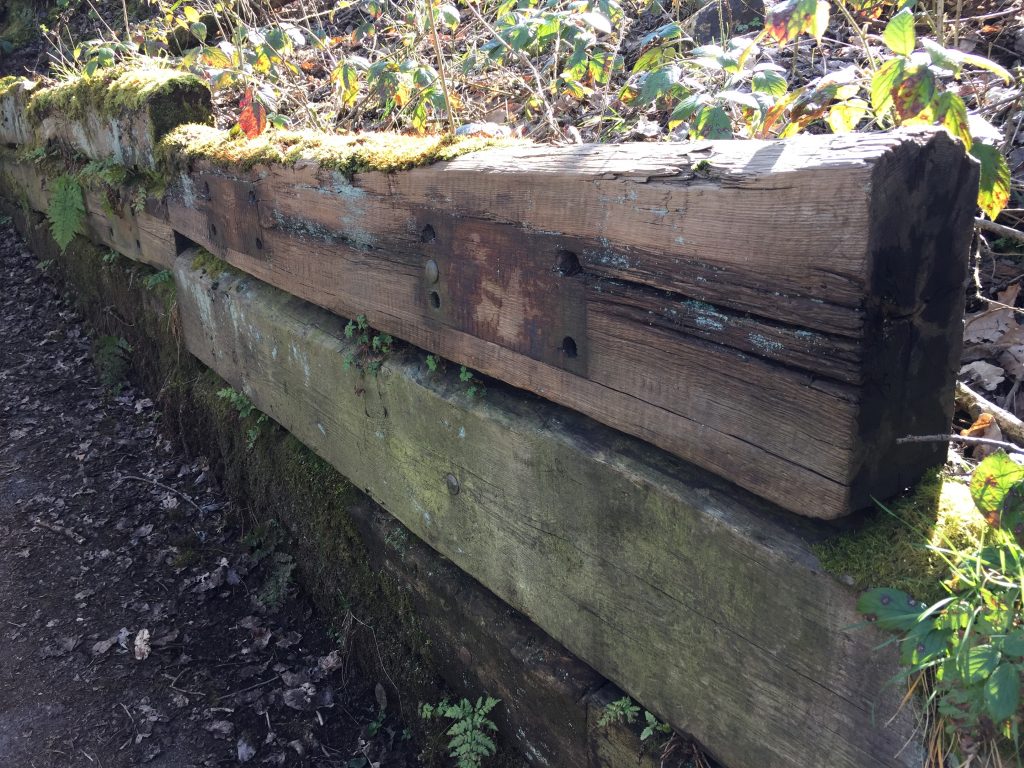
Occasionally a train passed by with only one or two passengers aboard. The path was very straight and very flat which made a change from the other walks I’ve been doing all week. There were several families with baby buggies enjoying the beautiful Spring day. Suddenly I came to a rather odd plinth with ‘Williams’ engraved. The design looked quite avant garde and was around 5ft high. Quite a puzzle.
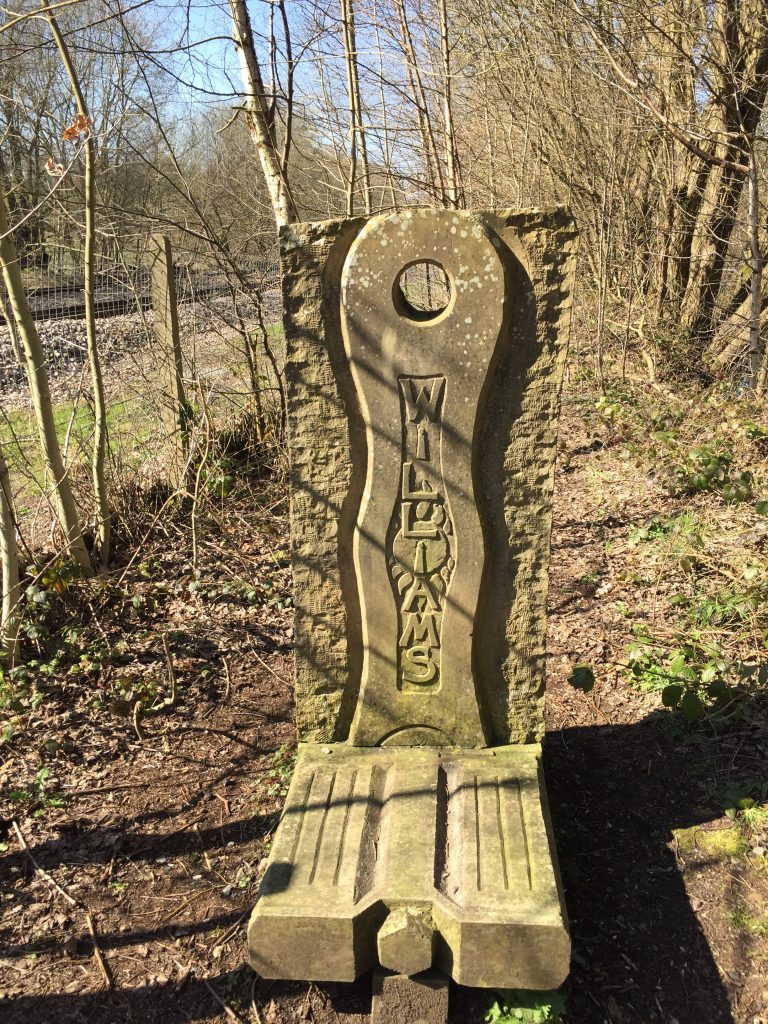
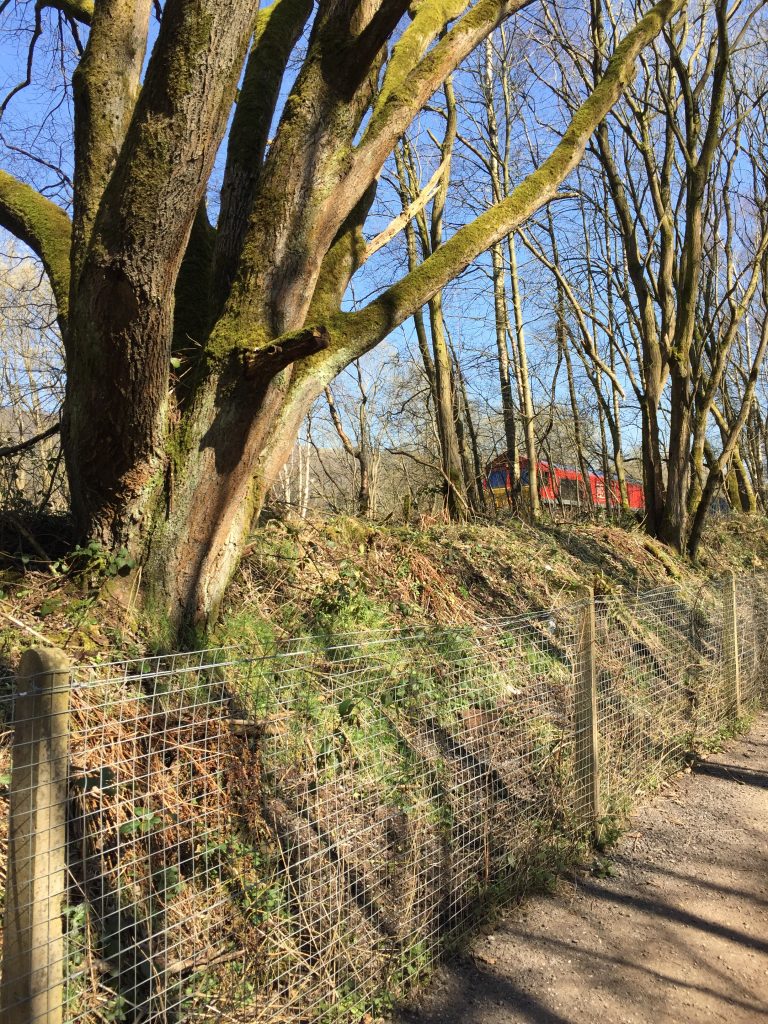
Eventually I came out of the woods and realised where I was. I was at the old school house which I’d admired from the canal and the bus for two years and always wondered how to reach it! It’s a very imposing building, now sectioned into apartments, with an attached manse, but though I can find lots of ads online for the apartments I’ve not been able to discover anything about its history. I think I’ll have to put a message on Facebook to the Mytholmroyd History page. It’s been very useful in similar instances.

Across the valley I could see Brearley Hall where Branwell Brontee rented a place to live and an ancestor of mine did the same.
Having walked 3.5 miles I decided to stop and have my picnic, choosing a sheltered spot by the river and while I ate the geese kept me entertained. I’d brought my art supplies but hadn’t found a good place to sit and draw, so I headed back.
I noticed a stone post by the path, close to the railway bridge, which I hadn’t noticed on my outward journey. on closer observation it looked ancient, but it bore the carving of a skeleton and some words, hard to decipher but Murder was definitely one of them.
When I got home I discovered the story behind this plinth and the one I’d seen earlier. My thanks to VisitCalderdale.com for a succinct story of the Cragg Vale Coiners. I didn’t know the story until I read The Gallows Pole by local writer Ben Myers.
The apparent tranquillity of Mytholmroyd belies a murky past involving an 18th century counterfeiting gang, the ‘Cragg Vale Coiners’. This gang’s activities were said to be so damaging that they threatened to wreck Britain’s currency.
David Hartley learnt his trade as an ironworker in Birmingham, before getting into trouble and moving back to Mytholmroyd to escape the authorities. Once returned to his home at Bell House farmhouse (which is now a bed & breakfast accommodation with educational facilities) David used ironworking as a cover to clip or file the edges from gold coins, milling the edges back so the change was all but unnoticeable, and making counterfeit coins from the shavings whilst returning the clipped coins into circulation.David’s activities soon spread to other farms, with families at nearby Hill Top Farm and Keelham Farm soon becoming involved; forming the beginnings of the gang of Cragg Vale Coiners. Local publicans also helped by placing the counterfeit coins into circulation. David Hartley seems to have been an enigmatic leader, becoming known as ‘King David’ Hartley and the gang’s numbers grew considerably until well over 30 individuals were involved.
Rumours of the gang’s activities reached the authorities, who sent an excise man named William Deighton to investigate. One of the coiners turned King’s Evidence and betrayed the gang, leading to Hartley’s arrest at an Inn in Halifax on 14th October 1769. Hartley’s brother Isaac offered £100 to anybody who would kill Deighton. It is alleged that the plotters planned Deighton’s murder at an Inn in Mytholmroyd called Barbary’s, which is now gone, but was located on the opposite side of the road to the present day Dusty Miller. On November 10th 1769 at Bull Close Lane near Halifax, Deighton was approached by two men, Matthew Normanton and Robert Thomas. Deighton was shot dead, his body also showing signs of having been stamped on. Just days later, the Government offered a reward of £100 for information leading to the arrest of the murderers and a pardon for anybody, bar the killers, who would turn King’s Evidence.Over 30 people were subsequently arrested, including ‘King David’ Hartley, who was sentenced to death on April 6th 1770 and hanged at Tyburn, near York, on April 28th. His body is buried in the graveyard of the village of Heptonstall, above Hebden Bridge. Robert Thomas was acquitted of Deighton’s murder, but was later hanged in 1774 for being a highwayman. Matthew Normanton initially fled the authorities, but was later caught and hanged in 1775. Isaac Hartley was never brought to trial due to a lack of evidence and died in 1815, aged 78.
A few days later I got some more information about the Coiners and the monument: There is a carving of the skeleton which appears in the attached 1769 document. The quote “A Full and true Account of a barbarous bloody and inhuman murder” also comes from some document or book. Below that is a carving of one of the dies used to stamp the clipped coin and is a Portuguese moidore. On another face of the stone is a pair of shears for clipping the coin and on another face I think it is a file.

As I passed Mytholmroyd station a train drew up to the deserted platform. No-one got on and no-one got off. I immediately thought of Adelstrop. As a child I was sent to elocution lessons which initially took place in a room above the Coop in the centre of Bolton. My teacher was Mrs Dora Monks. As I progressed through the Royal College exams I also progressed to my lessons being held at her home. It felt like a mansion to me. The door was opened by a maid in. a maid’s uniform and I was shown first into the cloakroom and then into the study overlooking the main road. Adelstrop was the name of a poem and on a trip to Gloucestershire I visited Adelstrop in memory of the poem. It’s about a journey Edward Thomas took on 24 June 1914, during which his train briefly stopped at the now-closed station.
“Yes. I remember Mytholmroyd—
The name, because one afternoon
Of heat the express-train drew up there
Unwontedly. It was late March.
The rails rattled. Someone cleared his throat.
No one left and no one came
On the bare platform. What I saw
Was Mytholmroyd—only the name
And willows, willow-herb, and grass,
And meadowsweet, and haycocks dry,
No whit less still and lonely fair
Than the high cloudlets in the sky.
And for that minute a blackbird sang
Close by, and round him, mistier,
Farther and farther, all the birds
Of West Yorkshire’s Calder Valley”
(with apologies to Edward Thomas)
After my 7.1 mile stroll I taught my first online lessons of the present crisis and in the evening I tuned in to ‘Meet the Richardsons’. To my surprised I found that I featured in Episode 2. Last Spring I’d attended the annual Dock Pudding world championship in Mytholmroyd and the person who presented the winner’s trophy was someone I recognised from 8 out of 10 cats – Jon Richardson. I later discovered that he lives in Mytholmroyd and the series is filmed in his home there and in Hebden Bridge. I’d noticed the big movie cameras filming the event but thought nothing of it – until now. Here I am sitting watching ‘me’ in the audience!
So, returning to my first paragraph: Route 66 was one of the original highways across America. The highway, which became one of the most famous roads in the United States, originally ran from Chicago to Santa Monica. (A postcard arrived from Chicago yesterday from Rachel). I’ve travelled many of its desert stretches in New Mexico, Arizona and California. (I travelled 7.1 miles of it today in West Yorkshire) It was recognized in popular culture by both the hit song “Get your kicks on Route 66” (I appeared in a popular culture TV series) and in John Steinbeck’s classic American novel, The Grapes of Wrath (1939), the road “Highway 66” symbolized escape and loss. (very applicable to our present situation)
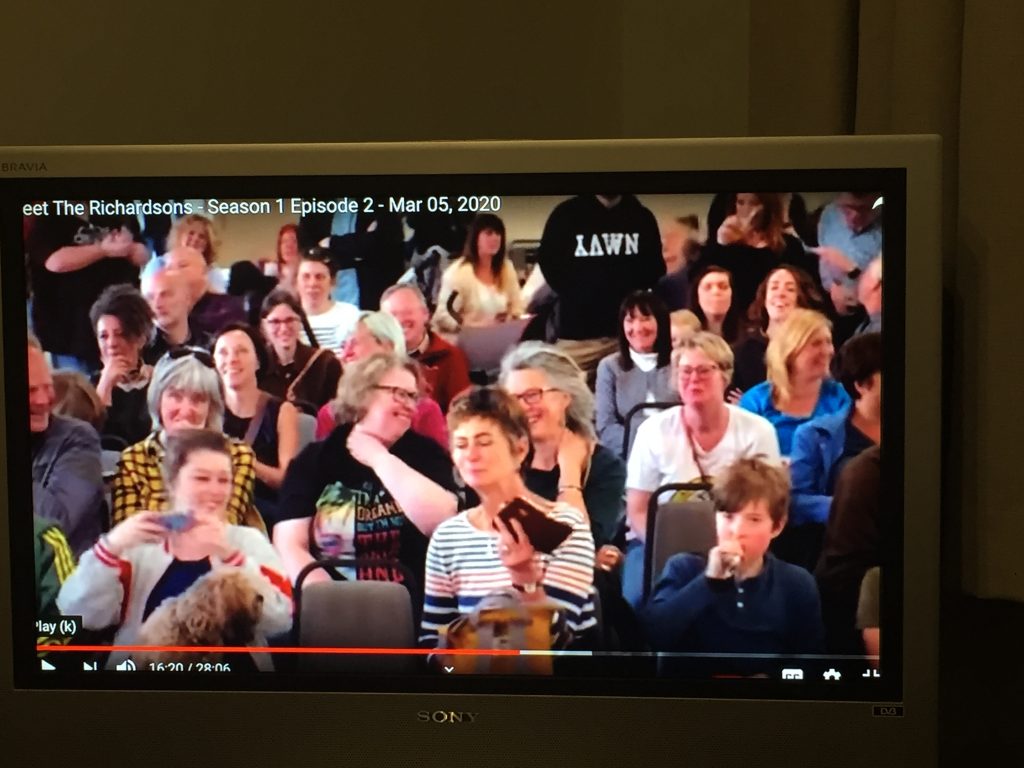
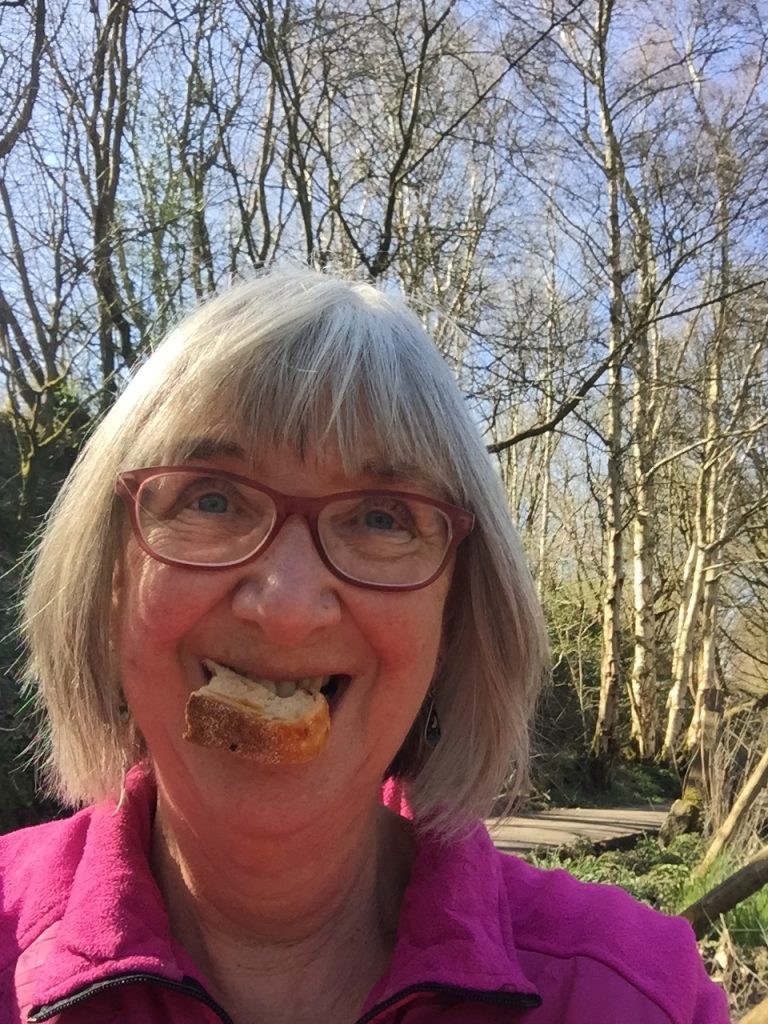
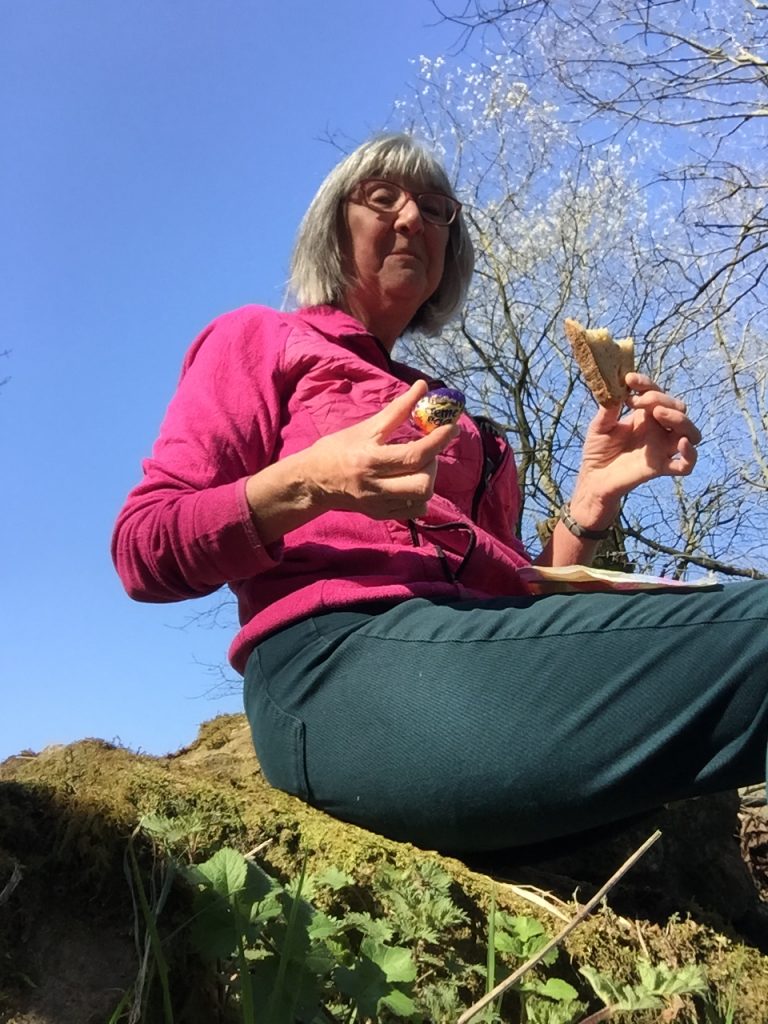



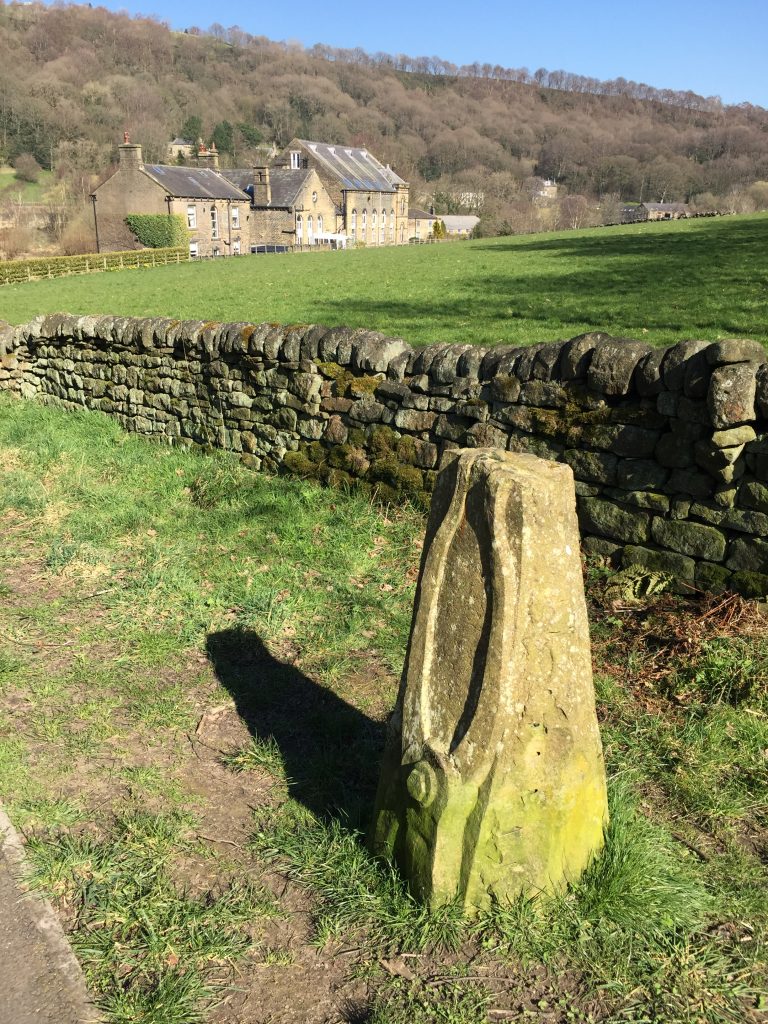
Leave a Reply